Is Pizza Good for Bulking or is it Just Junk Food?
Author:
Unlock your full potential by engaging with our experts and community! Have questions about your fitness journey or looking for expert advice on weightlifting techniques? Don’t hesitate — leave a comment below and David Sasha Schulz will provide a personalized answer and insights to help you reach your goals.
Torokhtiy is reader-supported. Some links are affiliate links, and we may earn a commission at no extra cost to you. See our disclosure page for details.
Bulking requires a sustained calorie surplus, adequate protein intake, and the right training schedule to put on quality muscle and size. Pizza is a tasty convenience food packed with calories and protein making it an easy way to hit the daily bulking targets.
So, is pizza good for bulking? We discuss the pros and cons of pizza below, and give some tips on how to make a healthier pizza when including it as part of your diet.
Is pizza good for bulking? Eating pizza for bulking phases provides a large amount of calories and protein as part of a flexible approach. Focus on normal portion sizes and make your own pizza to improve the macronutrient composition. Most of your bulking calories should consist of nutrient-dense, healthy foods.
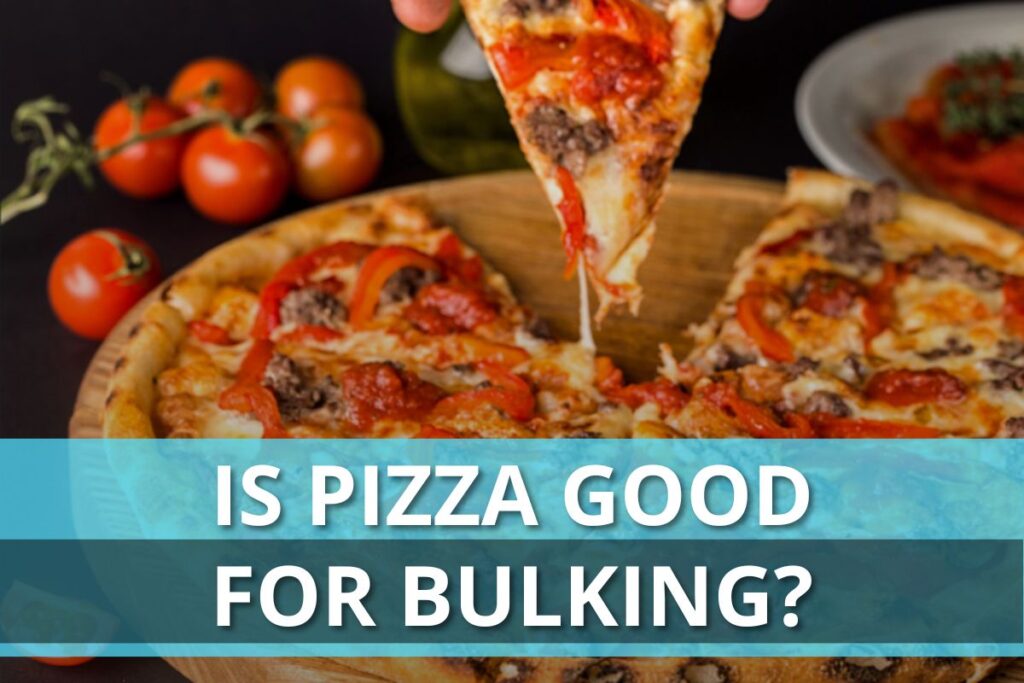
Is Pizza Good for Bulking?
Bulking involves eating extra calories above the amount needed to maintain body weight. The aim is to gain body mass and size, usually focused specifically on muscle. Both fat and muscle will be gained during a bulking phase, which is why a cutting phase usually follows as part of a bodybuilding nutrition cycle.
Maintaining a modest calorie surplus, monitoring the rate of weight increase, and eating nutrient-dense foods can help to minimize fat gain. So, where would pizza fit into this equation? Is it okay to consume during a bulking phase?
A typical pizza is made up of four components. These are:
- The Crust (Different thicknesses and flour used)
- The Sauce (Can be fresh or processed)
- The cheese (Can be fresh or processed, may be low fat)
- The toppings (Processed meats, lean meats, veggies, healthy fats)
The nutritional value of a pizza varies considerably depending on how it’s made up. Here’s the average nutritional value of some typical pizza slices:
| Pizza (Per Slice) | Calories (KCAL) | Protein (g) | Carbohydrates (g) | Fats (g) | Sodium (mg) |
|---|---|---|---|---|---|
| Pizza Hut BBQ Meatlovers | 263 | 10 | 27 | 11 | 536 |
| Pizza Hut Chicken Supreme | 234 | 14 | 25 | 7 | 438 |
| Pizza Hut Veggie Sensation | 263 | 14 | 25 | 11 | 419 |
| Pizza Hut Cheese Lovers | 310 | 18 | 23 | 14 | 452 |
Generally speaking, most store-bought and takeaway pizzas tend to be high in carbohydrates and fats which gives them a very high-calorie content. The cheese and added toppings give the pizza a fairly high protein content but with lots of saturated fat and sodium as well.
Pizza can be used for bulking phases as part of a well-organized approach. Including a few slices of pizza into a well-balanced bulking diet where the majority of calories are still made up of nutrient-dense, healthy foods can provide a host of benefits on top of a large amount of calories and protein.
So then, do bodybuilders eat pizza when bulking? Let’s take a look at the pros and cons of pizza for bulking in more detail.

Advantages of Pizza for Bulking
Strategically incorporating pizza as part of a bulking diet can have several advantages that make it worthwhile. Rather than viewing pizza as a good or bad food, consider the points below when focusing on the bigger picture.
✅ Has a High Energy Density
One of the hardest things about maintaining a calorie surplus whilst eating healthy is the volume of food required. This can often become tiresome, especially if you lead a busy lifestyle or have a naturally low appetite. A balance is needed between energy intake, muscle gain, and fat gain, with a greater calorie surplus associated with an increase in both.
With a high energy density, eating pizza as part of a bulk provides a convenient way to reach a calorie surplus with around 700-800 calories in 3 slices. A bulk seems fun to most, but eating a large volume of healthy food might be harder than you think. Pizza can be used to bridge this gap when eaten as part of a smart bulking approach to gain muscle mass.
✅ Can be Part of a Flexible Diet Approach
Even though you’re in a calorie surplus, sticking to the same food groups every day can become hard, especially if you’re doing it for a longer period. A flexible diet can prove useful over rigid dieting for bulking phases and cutting periods.
Strategically adding pizza as part of a flexible dietary approach helps to maintain a healthy mindset by providing a dietary break and giving you something to look forward to. The idea of a flexible diet is that foods can be incorporated into your overall macronutrient targets rather than certain food groups being viewed as good or bad.
A flexible diet can help to increase motivation and reduce the chances of binge eating when employed correctly. Look at foods as more or less calorie-dense and include them as part of a well-balanced bulking diet.
✅ Can Contain a Significant Amount of Protein
Protein plays a pivotal role in muscle growth, helping to repair and maintain muscle tissue when the correct exercise stimulus is provided. Protein ingestion stimulates muscle protein synthesis (MPS) which leads to muscle gain when suitable amounts are ingested consistently over time.
With the importance of protein established, is pizza a good source of protein? Whilst it depends on the pizza composition, a slice of pizza can contain a significant amount of protein. The drawback is you get a large dose of fat and carbohydrates to get this protein. Ingredients such as cheese, flour, and meat toppings all contain large amounts that can help achieve daily targets and promote muscle gain.
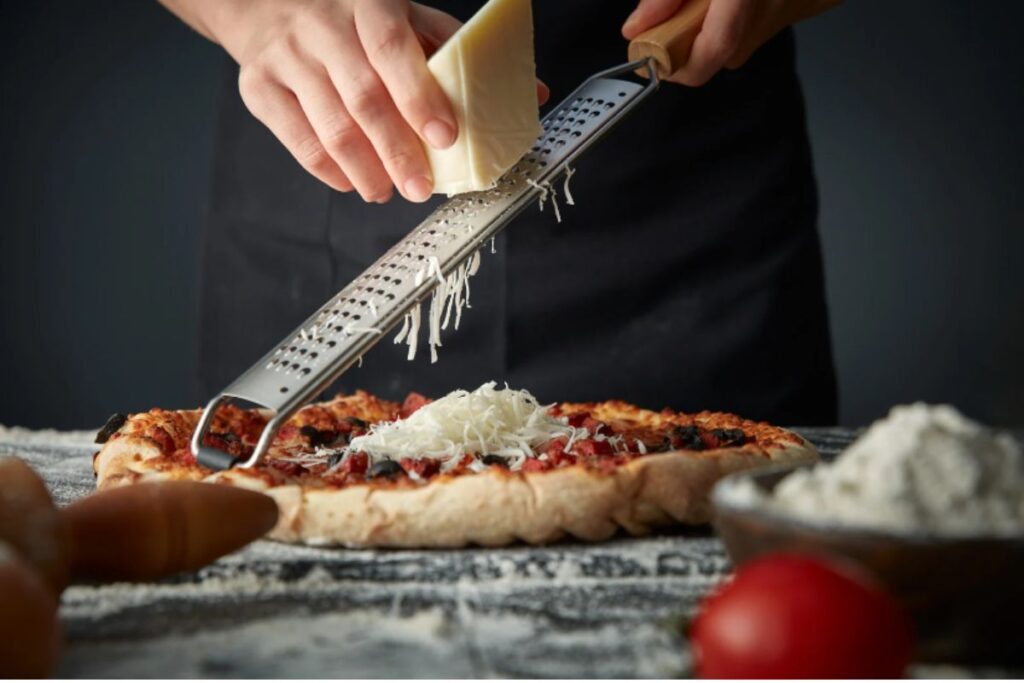
Disadvantages of Pizza for Bulking
Like most things, there’s a trade-off that needs to be considered. Eating pizza on a bulk may have a number of disadvantages if the right approach isn’t used. Bare these in mind when deciding if eating pizza is the right bulk approach for you. So, is pizza bad for bulking?
❌ Can Provoke Binge Eating in Some People
Binge eating involves periods of intense overeating that are often uncontrollable, associated with certain feeding and eating disorders. Pizza is a highly palatable, energy-dense food that can lead to large releases of dopamine as you enjoy the feeling of the fatty, rich pizza flavors.
Splitting a full pizza into sensible portion sizes can be hard for some, with a large amount of willpower needed. Unless you’re able to purchase single slices, consider the likelihood of you being able to portion the pizza accordingly before eating it as part of a bulk.
In this case, it may be beneficial to split the pizza with other people such as family and friends to reduce the chances of overeating.
❌ May Contain too much Saturated Fat and Sodium
Most takeaway and ready-made frozen pizzas contain poor nutritional profiles. This largely depends on the cheese and toppings used, with a large amount of saturated fat and sodium present in some types of cheese and processed meats such as pepperoni and sausage. Some pizza sauces are also high in sodium.
High consumption of saturated fat and sodium may lead to excessive fat gain, high blood pressure, and increased risk of coronary heart disease.
❌ Does not contain many micronutrients
Besides large amounts of saturated fat and sodium, the processed ingredients commonly used in pizzas contain poor micronutrient profiles. Whilst the main focus of a bulk should be on calories and macronutrients, micronutrients play a number of vital roles and shouldn’t be overlooked.
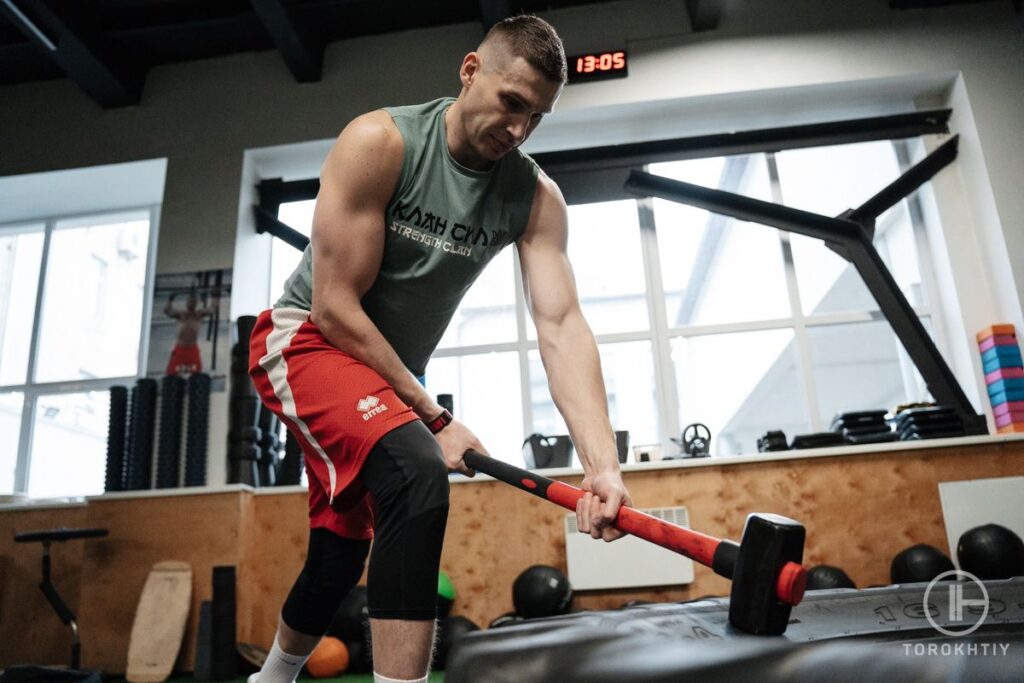
Tips for Eating a Healthier Pizza
Increasing the nutritional value of a pizza is much easier than you think, with small adjustments and additions totally changing the macronutrient profile. Here’s how:
1. Bake a Homemade Pizza
Making a pizza from scratch at home allows you to be involved in every step of the pizza-making process. This can mean deciding the crust type and thickness, the sauce ingredients, the amount and type of cheese, and the toppings used.
With this, you’re able to customise the macronutrient and micronutrient profile and take out some of the unwanted ingredients with lower nutritional value.
2. Load Pizza with Veggies
Loading the pizza with vegetable toppings is a great way to improve the micronutrient profile by helping to make up for the poor profiles in some of the other pizza ingredients. Some great vegetable options include:
- Bell peppers
- Zucchini
- Tomatoes
- Mushrooms
- Onions
A wide variety of vegetables can be used depending on your taste preference, with the list above some of the most common choices.
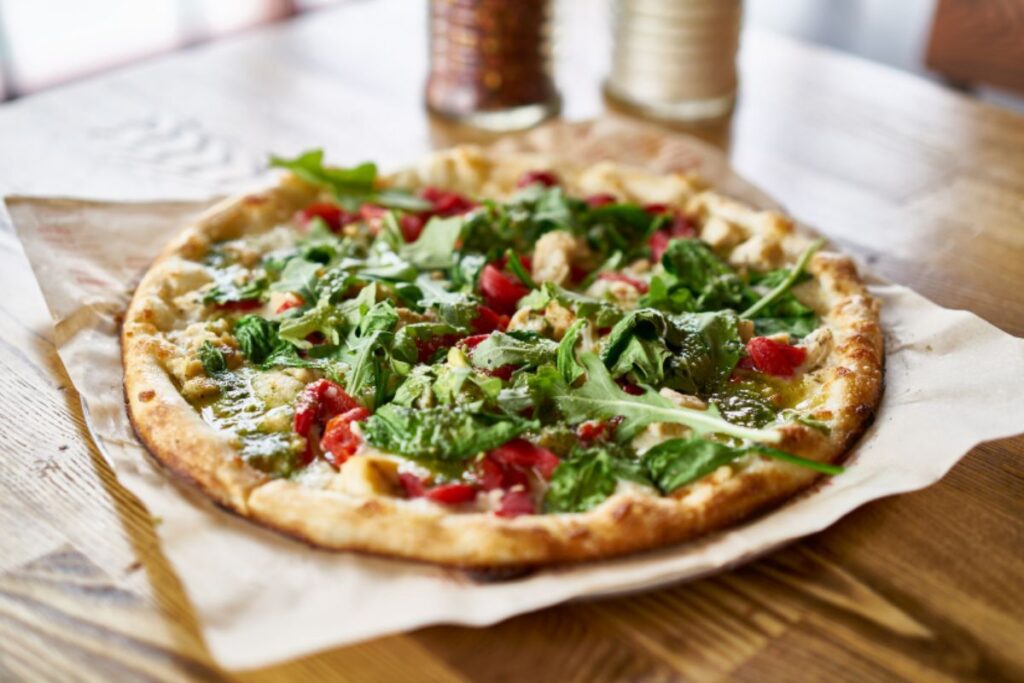
3. Choose Unprocessed Animal-based Protein
Processed meats do contain protein, but they are also high in saturated fat and sodium. Instead of processed meats, go for lean, animal-based protein toppings such as:
- Chicken
- Turkey
- White fish
- Shrimp
- Pork
- Salmon
- Tuna
4. Choose Lower Fat and Lower Sodium Cheese
Compared to the three-cheese blends used in most frozen and ready-made pizzas, part-skim mozzarella cheese naturally has a lower fat and sodium content. This makes it a healthier option that doesn’t take away much from the overall flavor. It also melts well which makes it an ideal alternative.
5. Skip the Dip if Possible
Whilst we all know pizza dips are great, you don’t need them to enjoy the pizza. Skipping the dip entirely or using fat-free sauce alternatives is an easy way to improve the overall macronutrient profile and reduce the calories if you’re going way over your daily amount.
Our Recommended Mass Gainer – Transparent Labs Mass Gainer
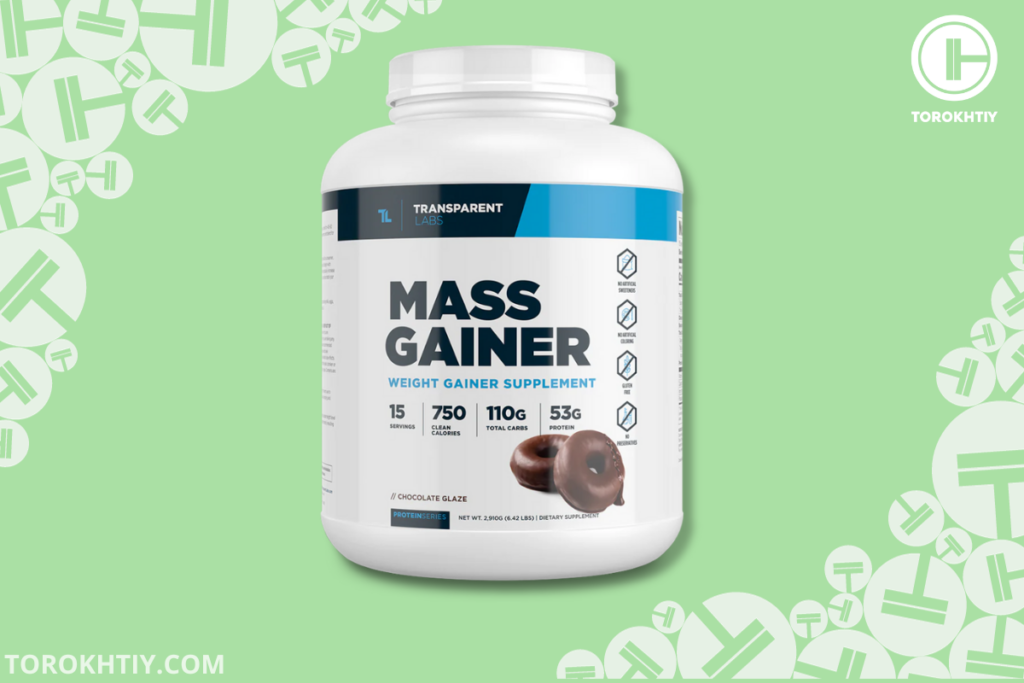
Transparent Labs offers a well-priced mass gainer packed full of high-quality, whole-food ingredients. It’s our recommended pick if you’re looking for some extra help to bulk up. Each scoop contains 26.5 grams of 100% grass-fed whey, whole food carbohydrate sources, and 1.5 grams of creatine monohydrate.
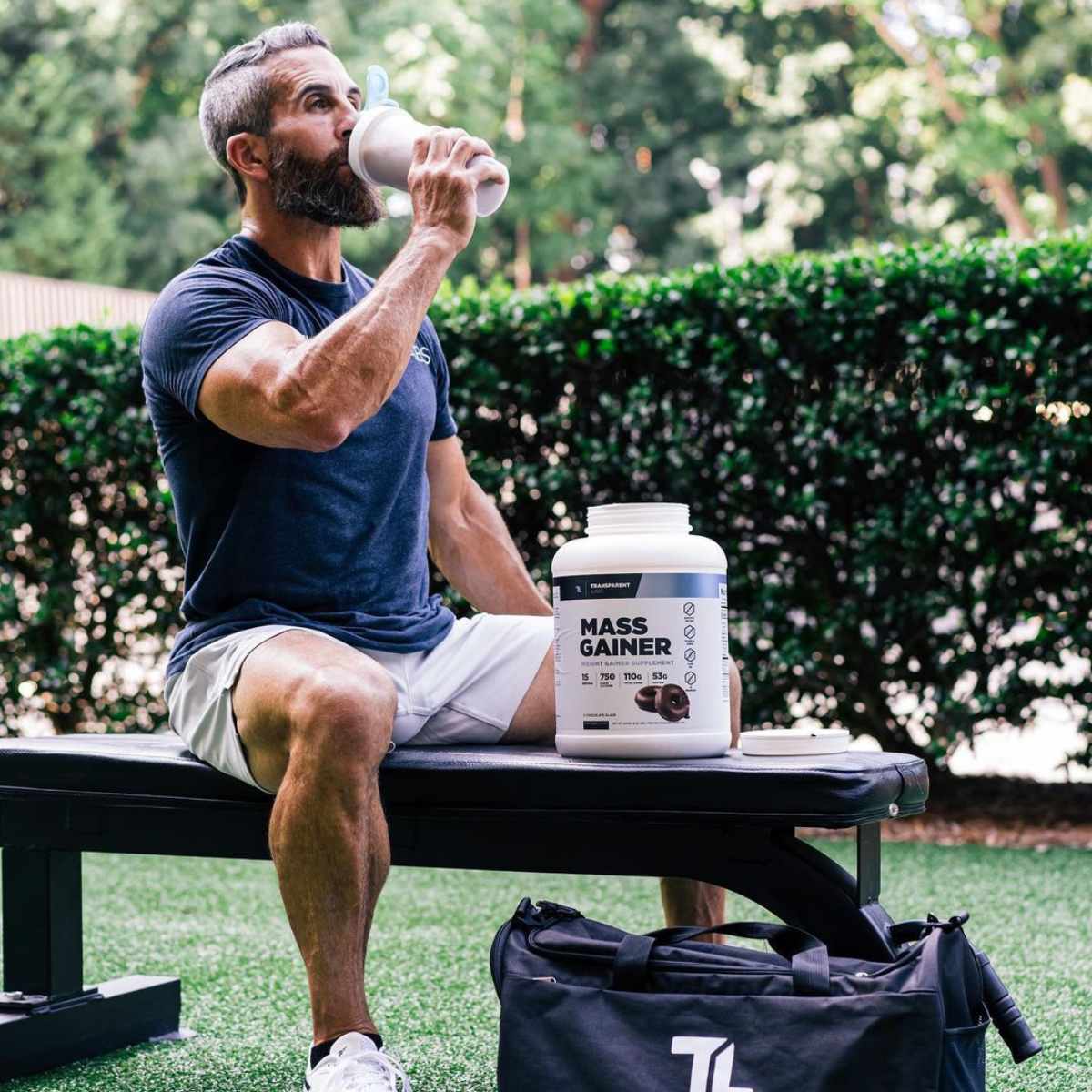
The Transparent Labs mass gainer has been certified by informed choice, with the quality and quantity clearly listed on the back of the tub. It costs slightly more than other mass gainers at $2.67 per serving, but in our opinion, the extra quality is worth the extra cost.
FAQ
Can I Eat Pizza For Bulk?
Pizza can be enjoyed as part of a bulking phase by making some smart choices and taking overall daily intake into account. Consider the nutritional content of each pizza slice and control the portion accordingly.
Making your own pizza can provide a healthier option, allowing you to customize the type of base, cheese, meats, and toppings.
Is Pizza Good For Protein?
Pizza can be a decent source of protein, with a typical pizza slice providing over 10 grams, remember that this comes with significant fat and carbohydrate also. The amount of protein per slice mainly depends on the amount of cheese used and the amount and type of toppings.
Bear in mind that a lot of the protein on normal pizzas comes from processed meats high in unsaturated fat and sodium.
How Much Pizza a Week Is Okay?
Pizza can be enjoyed weekly in moderation. The majority of a bulking diet should be made of high-quality, whole foods that contain a good mix of micronutrients. Consuming too much pizza each week may encourage over-eating and lead to unwanted fat gain.
Conclusion
So, is pizza good for muscle building? Pizza should be enjoyed in moderation as part of a strategic bulk. The high energy density and protein content can make pizza a popular option as part of a flexible dietary approach. Overall focus should still be placed on consuming a variety of healthy food sources whilst maintaining a modest calorie surplus.
For a healthier pizza option, bake your own at home and customize the toppings to improve the macronutrient profile, Load it with veggies, use lean meat and cheese sources, and avoid the dip if possible.
What’s your favorite pizza? How often do you consume it? Let’s talk about different bulking foods below!
Also read:
- Should You Take Mass Gainer
- Weight Gain Smoothies
- Cheap High Calorie Foods
- Are Potatoes Good for Bulking
- Bulk Protein Shake
- How to Gain Weight in Legs and Butt
References:
- Schoenfeld BJ, Grgic J, Van Every DW, Plotkin DL. Loading Recommendations for Muscle Strength, Hypertrophy, and Local Endurance: A Re-Examination of the Repetition Continuum. Sports (Basel). 2021;9(2):32. doi:10.3390/sports9020032
- Louisa Richards, “Everything you need to know about Diets”, https://www.medicalnewstoday.com/articles/cutting-diet#summary (accessed May 22, 2023).
- Lenzi JL, Teixeira EL, de Jesus G, Schoenfeld BJ, de Salles Painelli V. Dietary Strategies of Modern Bodybuilders During Different Phases of the Competitive Cycle. J Strength Cond Res. 2021;35(9):2546-2551. doi:10.1519/JSC.0000000000003169
- Rebekah Kuschmider, “What is Pizza Made Of?”, https://www.webmd.com/food-recipes/what-is-pizza-made-of (Accessed May 22, 2023).
- Ribeiro AS, Nunes JP, Schoenfeld BJ, Aguiar AF, Cyrino ES. Effects of Different Dietary Energy Intake Following Resistance Training on Muscle Mass and Body Fat in Bodybuilders: A Pilot Study. J Hum Kinet. 2019;70:125-134. doi:10.2478/hukin-2019-0038
- Conlin LA, Aguilar DT, Rogers GE, Campbell BI. Flexible vs. rigid dieting in resistance-trained individuals seeking to optimize their physiques: A randomized controlled trial. J Int Soc Sports Nutr. 2021;18(1):52. doi:10.1186/s12970-021-00452-2
- Stokes T, Hector AJ, Morton RW, McGlory C, Phillips SM. Recent Perspectives Regarding the Role of Dietary Protein for the Promotion of Muscle Hypertrophy with Resistance Exercise Training. Nutrients. 2018;10(2):180. doi:10.3390/nu10020180
- Iqbal A, Rehman A. Binge Eating Disorder. [Updated 2022 Oct 31]. In: StatPearls [Internet]. Treasure Island (FL): StatPearls Publishing; 2023 Jan-. Available from: https://www.ncbi.nlm.nih.gov/books/NBK551700
- Grillo A, Salvi L, Coruzzi P, Salvi P, Parati G. Sodium Intake and Hypertension. Nutrients. 2019;11(9):1970. doi:10.3390/nu11091970
- Nettleton JA, Brouwer IA, Geleijnse JM, Hornstra G. Saturated Fat Consumption and Risk of Coronary Heart Disease and Ischemic Stroke: A Science Update. Ann Nutr Metab. 2017;70(1):26-33. doi:10.1159/000455681
Why Trust Us?
With over 20 years in Olympic weightlifting, strength training, nutrition coaching, and general fitness our team does its best to provide the audience with ultimate support and meet the needs and requirements of advanced athletes and professional lifters, as well as people who strive to open new opportunities and develop their physical capabilities with us.
By trusting the recommendations of our certified experts in coaching, nutrition, and sports training programming, as well as scientific consultants, and physiotherapists, we provide you with thorough, well-considered, and scientifically proven content. All the information given in the articles concerning workout programming, separate exercises, and athletic performance, in general, is based on verified data.
The product testing process is described in more detail here.
Author: David Sasha Schulz
Doctor of Chiropractic, BSc Human Biology, CSCS
Strength coach (CSCS) – 10 years
Sasha is a Chiropractor and Kinesiologist practicing in Kelowna, BC, Canada. He has been practicing Chiropractic since 2019, integrating manual therapy, strength training and programming principles, and nutritional strategies to get his patients optimal results. He currently scratches the competitive itch in fitness, and the occasional endurance race, and plays golf and snowboards for fun. He has an interest in all strength and fitness-related sports.



Still have questions after reading our article? Unlock your full potential by engaging with our experts and community! Don’t hesitate — leave a comment below and David Sasha Schulz will provide a personalized answer and insights to help you reach your goals.